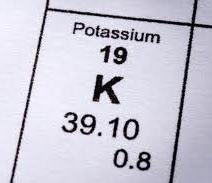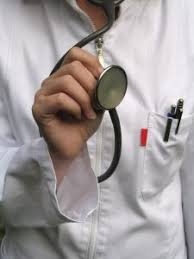March 12th, 2011 by Toni Brayer, M.D. in Health Tips, Research
No Comments »

Several studies have shown that women have a higher mortality rate than men if they have a heart attack. A study published in the American Heart Journal helps to explain why. The researchers looked at data from 2,542 women who had a heart attack. Compared to men, the women were older, less likely to be white, and less likely to smoke. They also had more serious health conditions than the men. They had diabetes, high blood pressure (hypertension), congestive heart failure, and chronic obstructive pulmonary disease (COPD).
We’ve known for a long time that women are about 10 years older than men at the time of their first heart attack. The authors believe that the reason women are more likely to die is because of these other conditions that are present. Women in the study were also more likely to receive a blood transfusion and experience gastrointestinal bleeding, strokes, and vascular complications which lead to death.
They didn’t find any gender difference when they controlled for these other conditions. The number of diseased vessels were the same as was the severity of stenosis.
So what does this tell women? The guidelines for longevity and good health haven’t changed: Don’t smoke, control high blood pressure, and make sure your weight is healthy to prevent diabetes and other vascular problems. Stay active. Heart attacks can be prevented by good lifestyle choices.
*This blog post was originally published at EverythingHealth*
March 4th, 2011 by Toni Brayer, M.D. in Health Tips, Research
No Comments »

 There are few medical conditions that people fear more than a stroke. We know that blood pressure control and lowering cholesterol levels reduces stroke risk. Now, thanks to a huge analysis from Italy published in the Journal of the American College of Cardiology, we know that higher dietary consumption of potassium is associated with lower rates of stroke and could also reduce the risk of coronary heart disease and total cardiovascular disease, too. What is even more remarkable is that the results apply to all parts of society and not just to specific “at-risk” subgroups.
There are few medical conditions that people fear more than a stroke. We know that blood pressure control and lowering cholesterol levels reduces stroke risk. Now, thanks to a huge analysis from Italy published in the Journal of the American College of Cardiology, we know that higher dietary consumption of potassium is associated with lower rates of stroke and could also reduce the risk of coronary heart disease and total cardiovascular disease, too. What is even more remarkable is that the results apply to all parts of society and not just to specific “at-risk” subgroups.
Most doctors aren’t even aware of how important it is to eat potassium-rich foods. And what are these foods that have potassium? Surprise: It’s fruits and vegetables like bananas, tomatoes, oranges, apricots, most legumes, spinach, winter squash, avocado, kiwi, and cantaloupe. Actually, almost all fruits and veggies have moderate to high potassium content.
The researchers looked a number of well-done studies that included 247, 510 participants over age 30 and found that those patients with the higher potassium intake reduced their stroke risk by 21 percent. The Italian doctors say the protective effect of potassium against stroke is in part due to its blood pressure lowering effects and also due to other properties of the potassium mineral, such as the inhibition of free radical formation.
I’ve written before about the DASH diet, which also found that reduction of sodium and addition of fruits and vegetables to the diet is an effective way to control blood pressure. The DASH diet is high in potassium.
Think about it: Did you have five servings of fruits and vegetables today? Numerous studies have shown their life-prolonging benefits. This new study just adds to what we already know. I challenge all readers to keep a diet count and make sure you are eating five fruit and vegetable servings a day — every day — to help reduce your risk of stroke, cancer, and heart attack.
*This blog post was originally published at EverythingHealth*
February 21st, 2011 by Toni Brayer, M.D. in Health Tips, Opinion
No Comments »

 “But doc, my blood pressure is always normal at home.” I wish I had a dollar for every time I have heard that line and I know it is true. When some patients come to see me, their blood pressure is abnormally high (above 130/90). This is known as “white-coat hypertension.” Although it has been thought to be from anxiety about seeing the doctor, even long-established patients who have no conscious anxiety can exhibit elevated blood pressure in the office.
“But doc, my blood pressure is always normal at home.” I wish I had a dollar for every time I have heard that line and I know it is true. When some patients come to see me, their blood pressure is abnormally high (above 130/90). This is known as “white-coat hypertension.” Although it has been thought to be from anxiety about seeing the doctor, even long-established patients who have no conscious anxiety can exhibit elevated blood pressure in the office.
Because blood pressure naturally fluctuates and the office visit is not a “normal” setting, it is important for patients who have high blood pressure (hypertension) to have their own blood pressure cuff at home. Now that devices are automated and easy to use, everyone with hypertension should be monitoring their blood pressure in the comfort of their own home. I advise multiple readings over a week at different times of day. Get a reading when resting and when rushing around. Take your blood pressure after you exercise and after a meal. It is important to keep a log and write it down. Only then can we see patterns and know if the blood pressure is controlled or not.
Blood pressure readings in the doctors office are not necessarily the most accurate. Patients are often rushed trying to get parked and in on time. Medical assistants can use the wrong size cuff or not position the arm correctly. Listening (auscultation) is not very accurate due to human error. It is the multiple readings over time that give a more accurate picture of blood pressure control.
High blood pressure in the office can be true hypertension or it can be white-coat hypertension that is usually controlled at home. If a patient is on blood pressure medication and has controlled blood pressure at home, I will not add more medication just because they are elevated in the office. If a patient has not been diagnosed with hypertension and his or her blood pressure is elevated in the office, he or she is advised to get their own blood pressure cuff for at home and return with readings for us to review. This way we can minimize unnecessary and expensive medication and make sure we are protecting the patient as well.
*This blog post was originally published at EverythingHealth*
February 13th, 2011 by Toni Brayer, M.D. in Better Health Network, Opinion
No Comments »

With the aging of America, it’s well known that there will be a shortage of registered nurses and nursing assistants to take care of the population. It’s predicted that the shortage of nurses in California will climb to 80,000 by 2015. California has just 653 registered nurses employed per 100,000 people.
One of the problems is a lack of qualified faculty to teach at nursing schools. California was forced to turn away 23,000 qualified applicants from nursing programs during 2008-2009. And this week Humboldt State University announced plans to discontinue the school’s nursing program because of financial concerns and inability to retain nursing faculty. Shortage of nurses and closing nursing programs — now there’s a big disconnect.
*This blog post was originally published at EverythingHealth*
February 7th, 2011 by Toni Brayer, M.D. in Health Tips, News
No Comments »

 The Canadian Medical Association Journal (CMAJ) has published a new primer designed to help physicians when they counsel pregnant women. They note that sex during pregnancy is normal and is generally considered safe. The authors point out that there are very few proven contraindications and risks regarding intercourse in normal pregnancy.
The Canadian Medical Association Journal (CMAJ) has published a new primer designed to help physicians when they counsel pregnant women. They note that sex during pregnancy is normal and is generally considered safe. The authors point out that there are very few proven contraindications and risks regarding intercourse in normal pregnancy.
Pregnant women and their partners are often afraid to have sex. Men may think they are “invading” the home of the fetus and could actually harm the baby. In fact, the fetus is quite safe, ensconced in the uterus (womb) and the cervix (opening of the uterus) is closed in normal pregnancy. The penis has no contact with the fetus or the uterus during normal intercourse, no matter what the position.
When is intercourse considered risky? Only for women who are at high risk for preterm labor and for those with placenta previa because there is increased risk for hemorrhage. Even women who have had preterm labor may safely have sex unless they have cervical incompetence or a lower genital tract infection.
Women who are under the care of an obstetrician should know if they have any of these risks. The vast majority of women should be reassured that sex during pregnancy is safe for mom and baby.
*This blog post was originally published at EverythingHealth*












